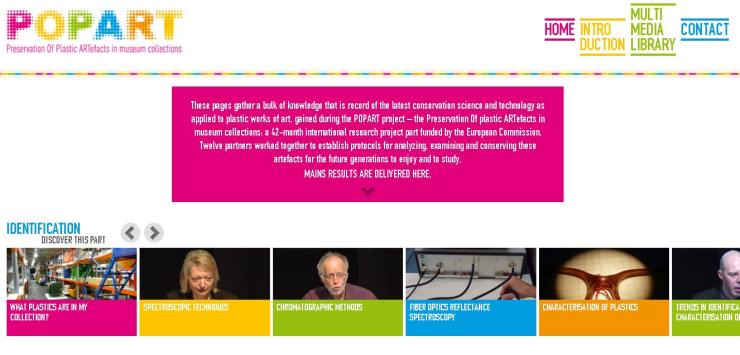
THE DEVELOPMENT OF SYNTHETIC POLYMERS IS ONE OF THE MAIN ACHIEVEMENTS OF THE CHEMICAL INDUSTRY DURING THE 20TH CENTURY. PLASTICS HAVE BEEN WIDELY USED TO PRODUCE DAILY LIFE OBJECTS AND ART ARTEFACTS FOR OVER 100 YEARS.
Unfortunately many plastics are simply not designed to last forever and start to degrade almost as soon as they are put on display. If one combines the ubiquity of plastics in artworks and other museum objects with their relatively short life expectancy, and the currently low level of plastic conservation expertise, then it is clear that a massive problem faces the museum community.
This awareness for conservation of plastic objects is new in Europe and there is a growing interest in the conservation community. In 2008, recognizing such imperious needs for the conservation community, the European Commission agreed to fund a research project to develop at a European scale a strategy for the preventive conservation and maintenance of modern material artefacts collections so called POPART: Preservation Of Plastics ARTefacts research project (Grant agreement n° 212218) in the 7th Framework Programme for Research and Development.
The project focussed on four priorities:
-
the identification of plastics in museum collections,
-
the plastic collection survey,
-
the degradation assessment of plastics,
-
the conservation treatments.
Based on scientific studies and collective experiences, POPART partners worked together to establish protocols for analyzing, examining and conserving these artefacts for the future generations to enjoy and to study. Mains results are delivered here.
The POPART hightlights website includes all the lectures of the conference, extracts from the book, posters presented at the conference, the samco database and much more.